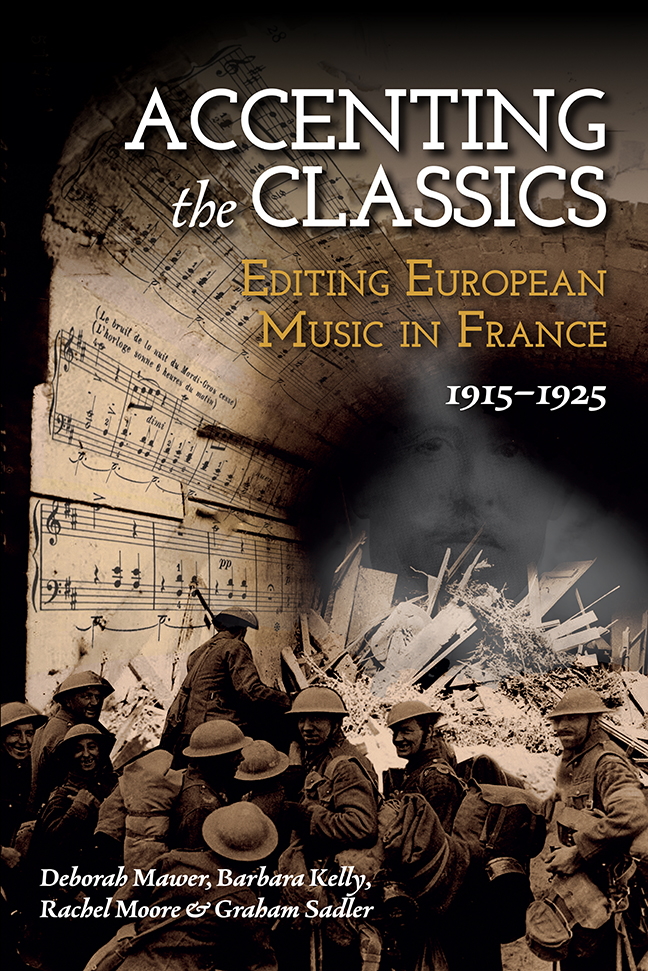Book contents
- Frontmatter
- Contents
- List of Figures
- List of Tables
- Notes on Co-authors
- Acknowledgements
- List of Abbreviations
- Note on the Text
- Introduction
- Part I Durand and His Édition Classique
- Part II Composer–Editor Case Studies
- Part III Beyond Editing: Pedagogy, Performance, Composition
- Afterword
- Select Bibliography
- Index
5 - Making Mendelssohn (More) French: Ravel and Six pièces enfantines
Published online by Cambridge University Press: 10 January 2024
- Frontmatter
- Contents
- List of Figures
- List of Tables
- Notes on Co-authors
- Acknowledgements
- List of Abbreviations
- Note on the Text
- Introduction
- Part I Durand and His Édition Classique
- Part II Composer–Editor Case Studies
- Part III Beyond Editing: Pedagogy, Performance, Composition
- Afterword
- Select Bibliography
- Index
Summary
In an intertextual spirit, similar to Jeffrey Jackson's intriguing book Making Jazz French, this chapter explores the French editing of music written by the German-Jewish composer Felix Mendelssohn (1809–47). A significant selection of Mendelssohn's oeuvre was edited as part of the Édition Classique across 1915– 20 by figures including Widor, Roussel and Garban, but most especially Ravel. Mendelssohn's own story involves a strong cosmopolitan element, which embraces intellectualism and artistic culture across disciplinary and national borders – literature, history, philosophy, coupled by his own painting and extensive letter-writing in German and English – with clear transnational European values. During his short life, he had travelled widely within Europe, especially on concert tours of England. But generally, he remained much more equivocal about connections with France, and about composers such as Berlioz and Giacomo Meyerbeer, ironic per haps given Meyerbeer's own transnational and Jewish identity. Furthermore, after his death, while typically regarded with much affection in England, Mendelssohn’s reputation suffered for a substantial period, notably at the hands of Wagner, but also via critics such as Bernard Shaw.
In France too, the critical response to Mendelssohn from the mid-nineteenth century onwards was distinctly mixed, despite critics harbouring a fondness for the fantasy of Le Songe d’une nuit d’été, op. 21 (overture: A Midsummer Night's Dream) and La Grotte de Fingal, op. 26 (Fingal's Cave). There was undoubtedly some antisemitic sentiment, preoccupied by his Jewish origins and heritage (‘his grandfather, the Jew Moïse Mendelssohn’), his own composite identity as ‘a Judeo-Protestant’ and, if indirectly, notions of ‘melancholy’ related to perceived over-use of the minor mode. Significantly, Camille Bellaigue, while praising Elijah, concluded his critique: ‘Here is the austere, Hebraic face of the genius of Mendelssohn.’ Interestingly, however, the main problematising of Mendelssohn, as revealed by J. M. J. Bouillat’s extended essay of 1906, which quotes various earlier French commentators, concerns his adopted Lutheranism and perceptions of his anti-Catholicism and ‘his Germanic coldness’.
So French equivocations about Mendelssohn may have been catalysed at least partly by the composer's own French equivocations. In light of these dual issues, I use evidence of volumes from the Édition Classique, encompassing the genres of organ, piano, chamber music and symphonies, to characterise and develop further an early twentieth-century French perspective on the composer: a missing jigsaw piece.
- Type
- Chapter
- Information
- Accenting the ClassicsEditing European Music in France, 1915-1925, pp. 123 - 152Publisher: Boydell & BrewerPrint publication year: 2023

